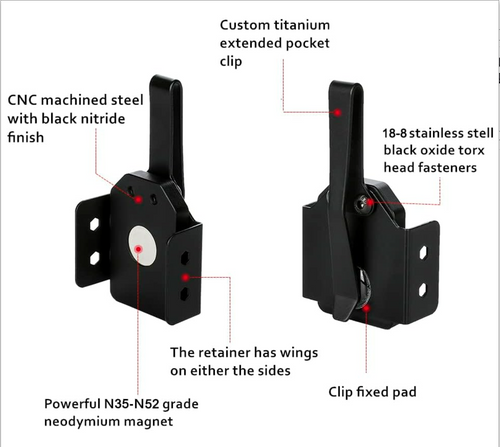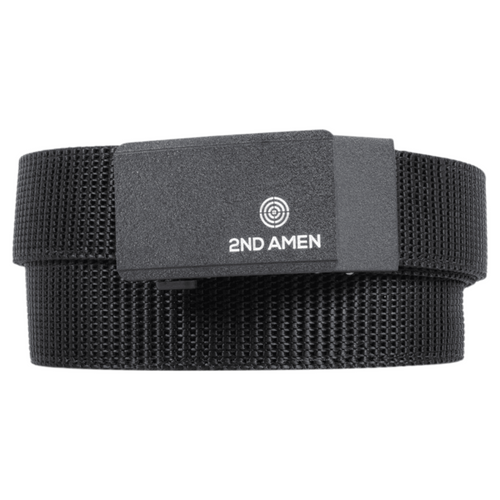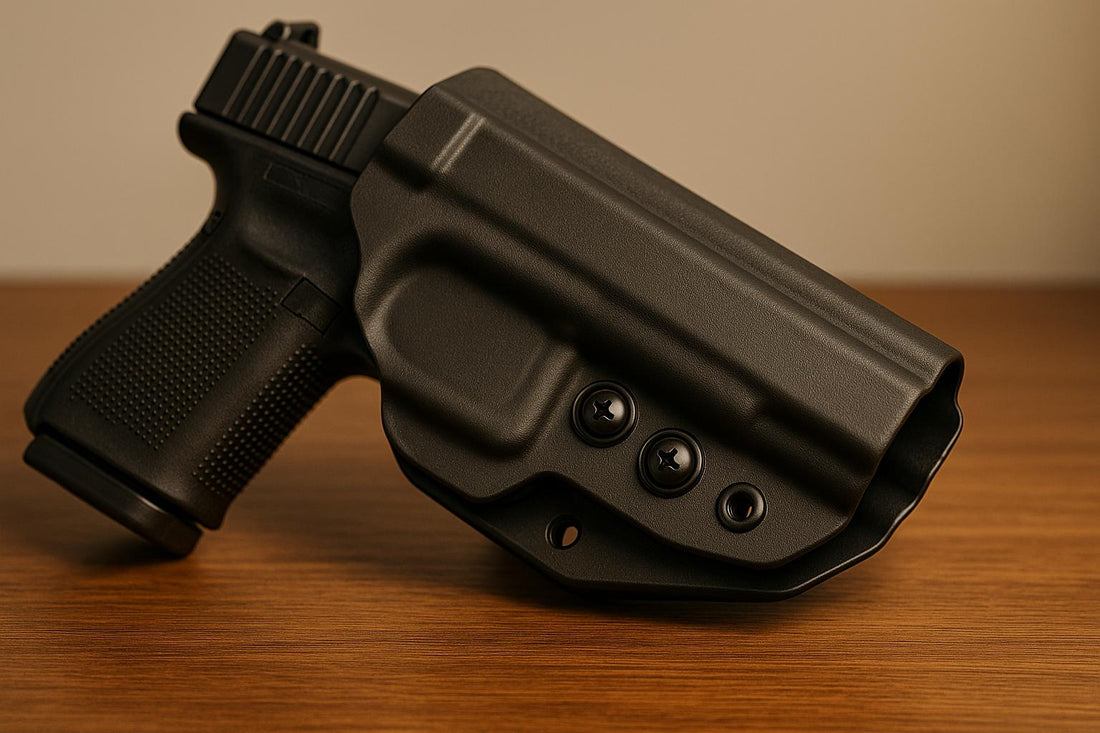Want your firearm secure but easy to access? Adjustable retention holsters let you control how tightly your firearm is held, balancing safety with a smooth draw. Here's the quick breakdown:
- What It Does: Keeps your firearm secure while allowing fast access.
- Why It Matters: Adjustable retention ensures a snug fit tailored to your activity level and firearm type.
- How It Works: Use tension screws and friction points to fine-tune retention. Test settings regularly for safety and comfort.
- Materials: Kydex offers stability, leather molds over time, and hybrid holsters combine both.
Whether you're on the move or sitting, proper retention ensures peace of mind and readiness. Keep reading for step-by-step setup and tips.
How Retention Systems Function
Main Retention Components
At the core of adjustable retention systems are tension screws, usually crafted from steel or aluminum. These screws allow you to control how tightly the holster grips your firearm. They work alongside molded friction points that make contact with specific areas of the firearm, such as the trigger guard, slide, or ejection port.
To ensure even pressure distribution and protect the holster during adjustments, backing plates and washers are used. For added security, some systems include internal locks that need to be disengaged before you can draw the firearm.
Making Retention Adjustments
Fine-tuning your holster's retention requires a step-by-step approach:
- Begin with an empty holster and locate the adjustment screws.
- Loosen the screws so they are just barely tight.
- Insert an unloaded firearm and make small, incremental adjustments.
- After each adjustment, test the retention by drawing the firearm.
- Ensure the firearm stays secure even when the holster is inverted.
- Make final micro-adjustments to achieve the ideal balance between security and ease of draw.
After a few days of use, double-check your settings. Holster materials can settle during the break-in period, which may slightly affect retention.
Holster Materials and Retention
The material of your holster plays a significant role in how well the retention system performs over time:
| Material Type | Retention Characteristics | Adjustment Stability |
|---|---|---|
| Kydex/Polymer | Offers precise and consistent pressure points | Retains settings reliably over time |
| Leather | Provides natural friction and molds to the firearm | Requires periodic readjustment |
| Hybrid | Combines a rigid outer shell with a flexible backing | May need occasional fine-tuning |
Leather holsters naturally conform to the shape of your firearm, which can enhance fit but may require adjustments as the material changes over time. On the other hand, Kydex holsters are known for their long-term stability and consistent retention.
Setting Up Your Retention
Starting Retention Setup
Begin by identifying the adjustment points on your holster. These are usually located near the trigger guard and along the slide area. With an Allen wrench, loosen the retention screws just enough so they hold their position without being overly tight.
Next, insert an unloaded firearm into the holster to check the fit. The goal is to achieve secure retention without restricting your ability to draw. Tighten each screw in small, quarter-turn increments until you reach the desired resistance. Once you're satisfied with the adjustment, test the setup to ensure everything feels stable and secure.
Testing Your Settings
Testing ensures your retention is both safe and functional. Follow these steps:
- Static Test: Hold the holster upside down with the firearm inside. The weapon should stay securely in place.
- Movement Test: Wear the holster and perform basic movements like bending, twisting, and sitting to check stability.
- Draw Test: Practice drawing the firearm from various angles and positions, ensuring the release pressure feels consistent.
Always conduct these tests with an unloaded firearm in a safe, controlled environment. Pay attention to any irregularities, such as uneven retention pressure or strange noises, which could signal improper adjustments.
Getting the Perfect Fit
Fine-tune your retention settings based on your activity level using the table below:
| Activity Level | Recommended Retention | Adjustment Notes |
|---|---|---|
| Light Activity | Medium tension | Use quarter-turn tweaks |
| Athletic Movement | High tension | Increase by half-turns |
| Vehicle Entry/Exit | Medium-high tension | Test retention while seated |
Small adjustments may be necessary depending on your daily routine and carry position. Changes in clothing, like switching from a jacket to a lighter shirt, might also require subtle tweaks. Use feedback from your tests to refine the fit and ensure a smooth draw.
During the first week of carrying, monitor your retention settings closely. Holster materials can settle slightly during the break-in period. Afterward, check your retention monthly or anytime you notice changes in draw consistency. This regular maintenance helps guarantee secure retention and predictable performance.
When to Use Adjustable Retention
Daily Carry Needs
For everyday activities like bending, climbing stairs, or walking quickly, your holster needs to keep your firearm secure without compromising accessibility. Most daily carriers find Level I or II retention works well - it holds the firearm firmly, even if the holster is turned upside down, while still allowing for a quick, smooth draw. If you’ve added accessories that change your firearm’s shape or size, adjusting the retention ensures everything stays snug and functional.
Weapon Light Holsters
Holsters designed for firearms with weapon lights require a bit more attention. These setups typically need two separate retention points: one for the firearm and another for the light housing. Adjusting each point individually ensures both components stay secure without slowing down your draw speed.
Weather and Clothing Changes
Shifting seasons and wardrobe choices can affect how your holster fits. In colder months, bulkier clothing and material contraction from the cold may require tightening the retention - usually by about a quarter to a half turn. On the flip side, lighter summer clothing might call for loosening the setting slightly. Make it a habit to tweak your retention as your clothing layers change throughout the year.
sbb-itb-7fb5bb8
Holsters: Retention adjustment
Houdini Holsters Retention Features
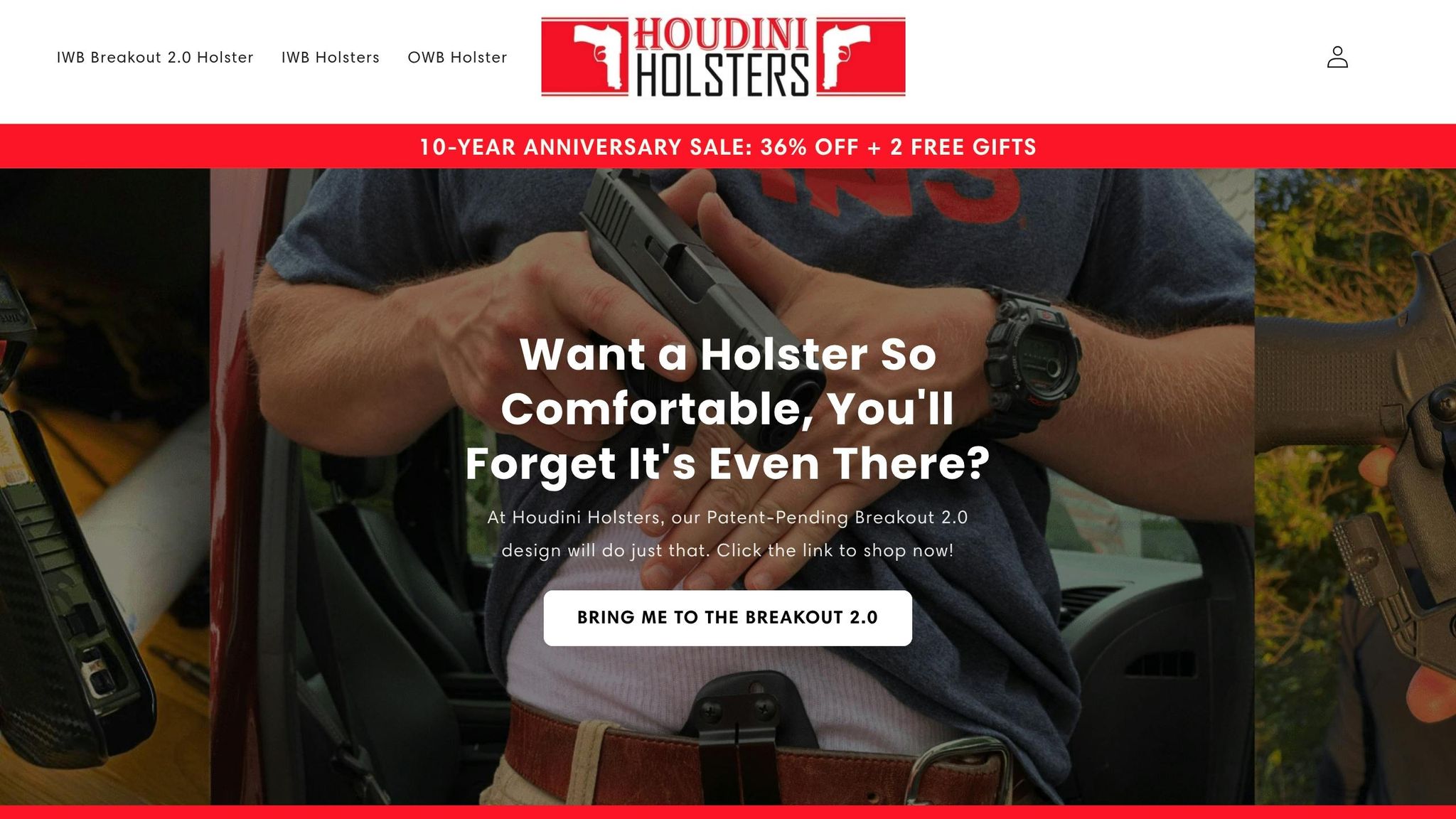
Houdini Holsters take adjustable retention to the next level with features designed for a secure and personalized fit.
Breakout 2.0 Retention System
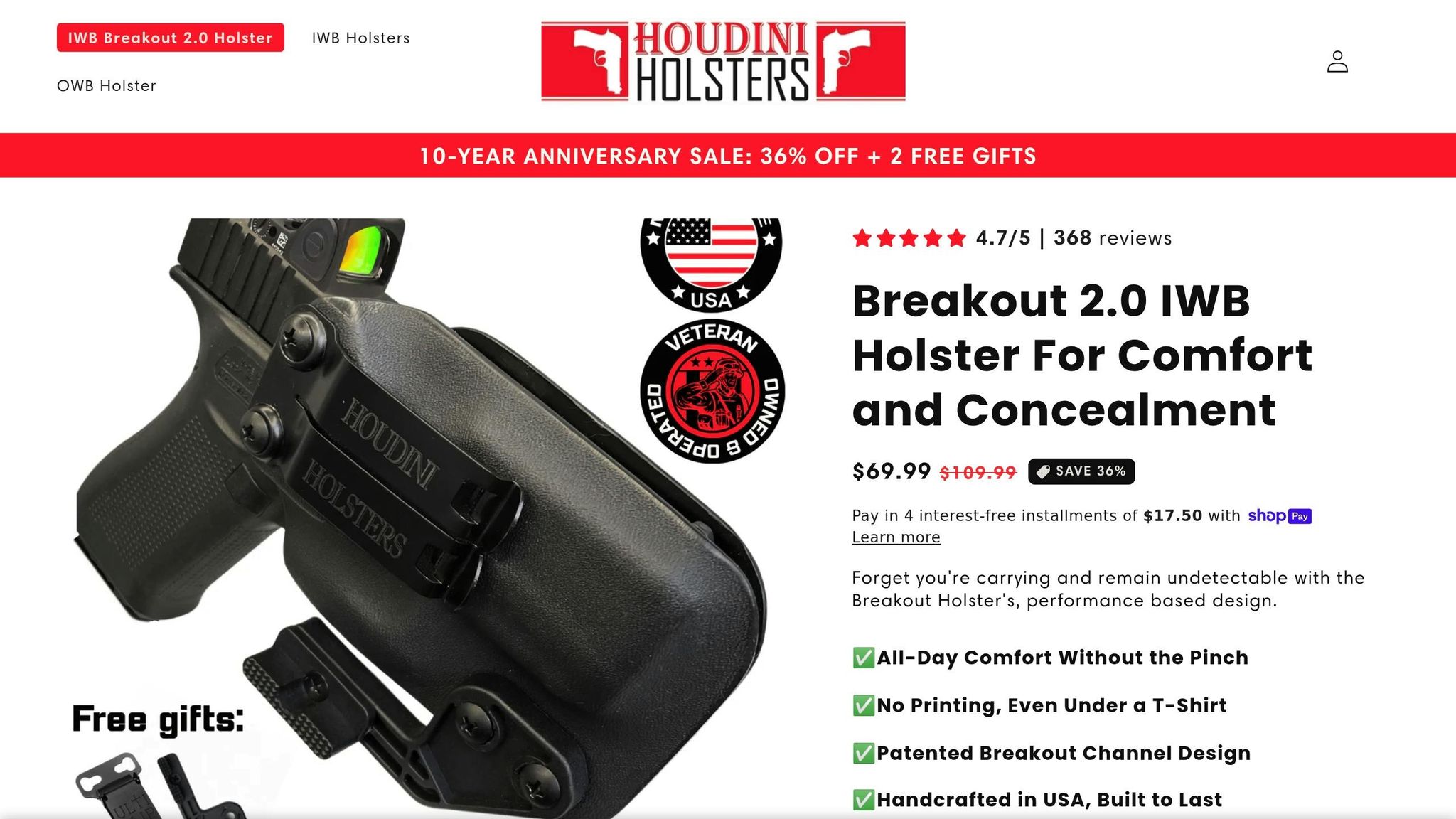
The patent-pending Breakout 2.0 system offers a balance of comfort and security. It keeps your firearm safe while allowing quick and easy access - perfect for everyday carry.
Build Quality and Materials
Each holster is handcrafted in the USA using high-quality, durable materials. With a lifetime guarantee against defects and a 30-day trial period, these holsters are built to perform reliably in any situation. The attention to detail in their design ensures a snug, dependable fit every time.
Conclusion: The Impact of Good Retention
Ensuring proper retention strikes the perfect balance between security and accessibility. It keeps your firearm secure while allowing quick access when it matters most. Let’s revisit the key takeaways that highlight why this is so important.
Key Takeaways
- Enhanced Safety and Performance: Adjustable retention systems improve both safety and functionality. They keep your firearm secure while enabling a smooth, reliable draw in any situation. High-quality materials and craftsmanship further ensure dependable performance, boosting confidence in your gear.
- Flexibility for Everyday Use: Retention systems need periodic adjustments to align with your activity level or changes in clothing. This flexibility allows your holster to provide consistent security without compromising comfort or accessibility. By adapting to your daily needs, adjustable retention becomes a critical feature for responsible firearm carry.
Ultimately, good retention is about staying prepared while ensuring peace of mind. It’s a small detail that makes a big difference in carrying responsibly.
FAQs
How often should I check and adjust my holster's retention settings?
You should regularly check and tweak your holster's retention settings to keep your firearm secure and ensure it performs as expected. A smart habit is to inspect it during firearm cleaning, after heavy use, or if you notice any difference in how well the holster secures your handgun.
Retention can be influenced by factors like wear and tear, changing weather conditions, or switching to a different handgun model. Regular adjustments are especially important for concealed carry, as they ensure both safety and quick access. If you’re using a Houdini Holster, their handcrafted designs make it simple to adjust retention, giving you the perfect balance of comfort and security.
What’s the difference between Kydex and leather holsters when it comes to retention and upkeep?
Kydex and leather holsters each bring their own strengths when it comes to retention and maintenance, making them suitable for different preferences and needs.
Kydex holsters are crafted from a rigid thermoplastic material, which is precisely molded to fit the firearm. This design ensures excellent passive retention, holding the gun securely in place. They’re also incredibly low-maintenance - just a quick wipe with a damp cloth keeps them clean. Plus, Kydex is moisture-resistant and doesn’t stretch or lose its shape over time, making it a reliable, hassle-free option.
Leather holsters, by contrast, offer a classic, more traditional aesthetic and feel. They can provide solid retention as well, but they often require a break-in period to achieve the perfect fit. Over time, leather may stretch slightly, which could mean occasional adjustments or extra care. Regular conditioning is necessary to keep the leather from cracking and to preserve its durability.
Ultimately, the choice between Kydex and leather comes down to what matters most to you - whether it’s the modern durability and ease of Kydex or the timeless comfort and style of leather. Both have their place depending on your priorities for comfort, longevity, and maintenance.
How can I tell if my holster's retention is properly adjusted for everyday use?
To get the right retention for your holster, aim for a balance between security and ease of draw. If the retention is too tight, you might struggle to draw your firearm quickly - something you definitely don’t want in a high-pressure situation. On the flip side, if it’s too loose, your handgun could shift or even fall out during everyday activities.
Here’s a simple way to check: insert your unloaded firearm into the holster and turn it upside down. If the handgun stays in place without needing excessive force, the retention is likely set correctly. Also, spend some time practicing your draw to make sure it feels natural and consistent. Many holsters, like those from Houdini Holsters, come with adjustable retention screws, making it easy to fine-tune the fit to suit your needs. Always test your adjustments thoroughly and prioritize safety before carrying.

